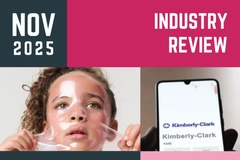In-cosmetic Asia 2024: Shiseido executive warns of continued challenges for sustainable beauty
Shiseido’s Tomo Osawa, director of the Regional Asia Pacific Innovation Center, spoke to Personal Care Insights from In-cosmetic Asia, taking place this week in Bangkok, Thailand. Osawa presented at sessions, focusing on the well-being of people with skin concerns and the elderly.
In this key interview, Osawa spoke to us about Asia-Pacific skin care trends, Shiseido’s focus on sustainability and how brands that don’t prioritize sustainability will become obsolete.
We also reported on the top ingredient innovations announced this week at in-cosmetics Asia.
Can you discuss any unique skin care needs or preferences in the Asia-Pacific market that influence your research?
Osawa: There are common skin care concerns across the Asia-Pacific region, such as anti-aging concerns like sagging and wrinkles. However, there are also unique challenges specific to this market. For instance, it is widely noted that consumers in the Asia-Pacific face a higher prevalence of acne concerns. Moreover, due to the region’s stronger UV intensity compared to other areas, UV protection is a top priority, and addressing the damage caused by prolonged exposure is essential. I am particularly interested in understanding how skin characteristics vary by climate, dietary habits, lifestyle and genetic traits. As analytical technologies continue to advance, I believe we’ll gain even deeper insights into these variations, driving future innovations in the cosmetics industry.
What do you see as the biggest challenges and opportunities in the beauty industry over the next decade?
Osawa: Sustainability will be a critical challenge for the cosmetics industry over the next decade, as many manufacturers and raw material suppliers are already addressing it. Both regulatory requirements and consumer expectations around sustainability and environmental impact are evolving rapidly, placing increasing pressure on companies to meet higher standards.
Brands that fail to prioritize sustainability risk becoming obsolete. As consumers become more discerning, they will scrutinize whether a company’s sustainable solutions are genuinely beneficial for the planet and the environment. Additionally, consumer expectations for cosmetic products will continue to evolve, demanding not just sustainable solutions but also high performance. Therefore, achieving a balance between sustainability and product efficacy will be essential.
What recent innovations at Shiseido are you most excited about?
Osawa: Shiseido has made numerous innovations, making it challenging to choose just one. However, if I had to highlight a particular achievement, I would select LiquiForm, which is used in our iconic essence lotion, Eudermine. LiquiForm is a groundbreaking technology that integrates both bottle molding and filling in a single step — a world-first for cosmetics. This innovation allows us to reduce plastic usage in packaging by approximately 70% and decrease CO2 emissions by approximately 70% compared to our existing standard refillable packaging (for the same volume), covering the entire supply chain from raw material procurement to production and disposal.
Sustainability has become a core priority for businesses striving for long-term growth and the health of our planet.
Shiseido’s sustainable packaging
Shiseido announced that it would use LiquiForm, a packaging technology developed by Amcor, in its cosmetic packaging manufacturing in 2022 to manufacture Shiseido’s Eudermine Activating Essence, a face lotion. Shiseido products
Shiseido products
Another feature of this product is that the customer can also buy a refill container and reuse the main outer container, reducing the amount of plastic. This sustainable design won the WorldStar Award from the World Packaging Organization earlier this year in the health and personal care category.
Innova Market Insights has reported a 27% compound annual growth rate in sustainable packaging for personal care products since 2019. Regionally, nearly half of the sustainable packaging launches were in Europe, and 28% of the launches were in Asia.
With additional reporting from Venya Patel.














